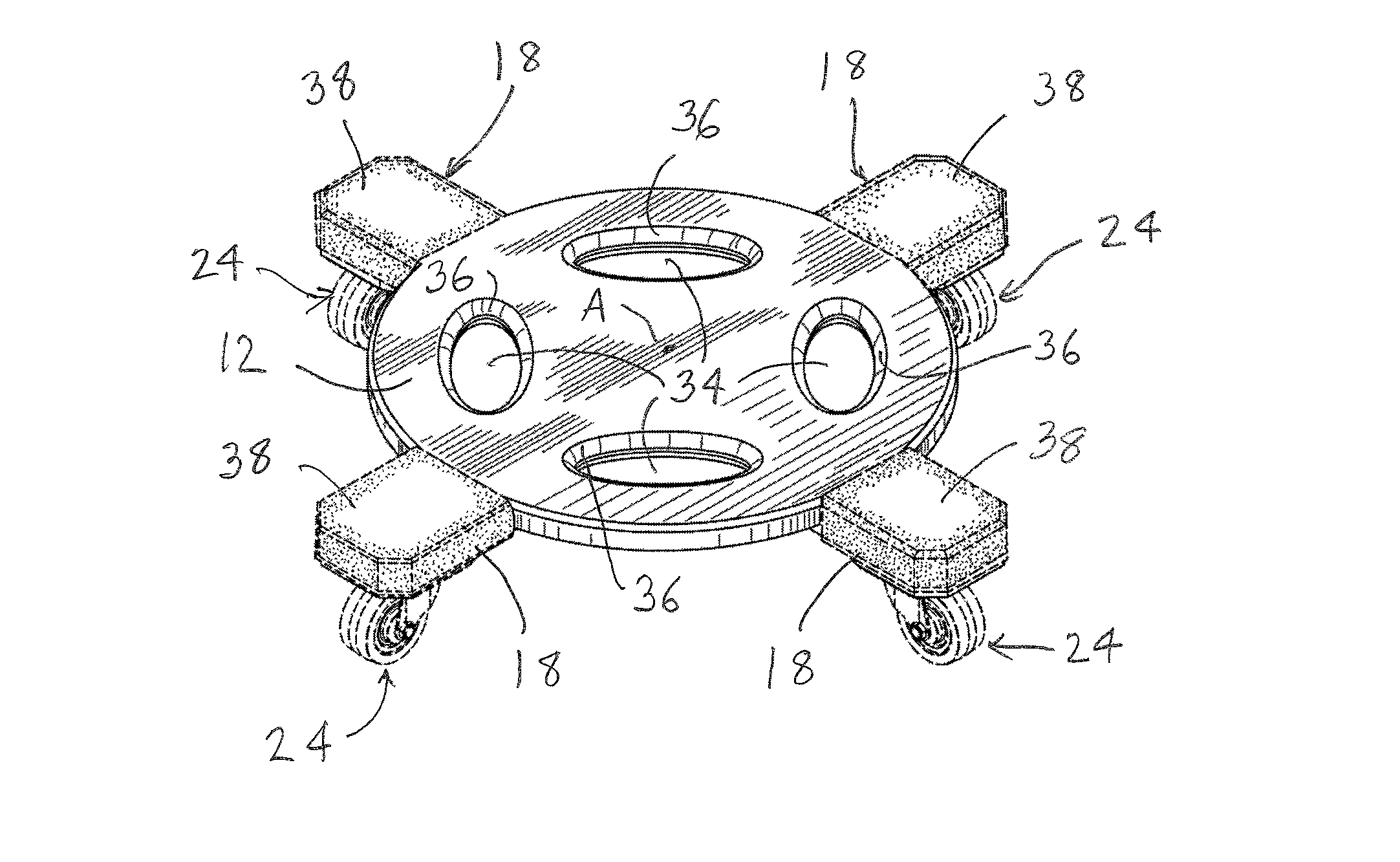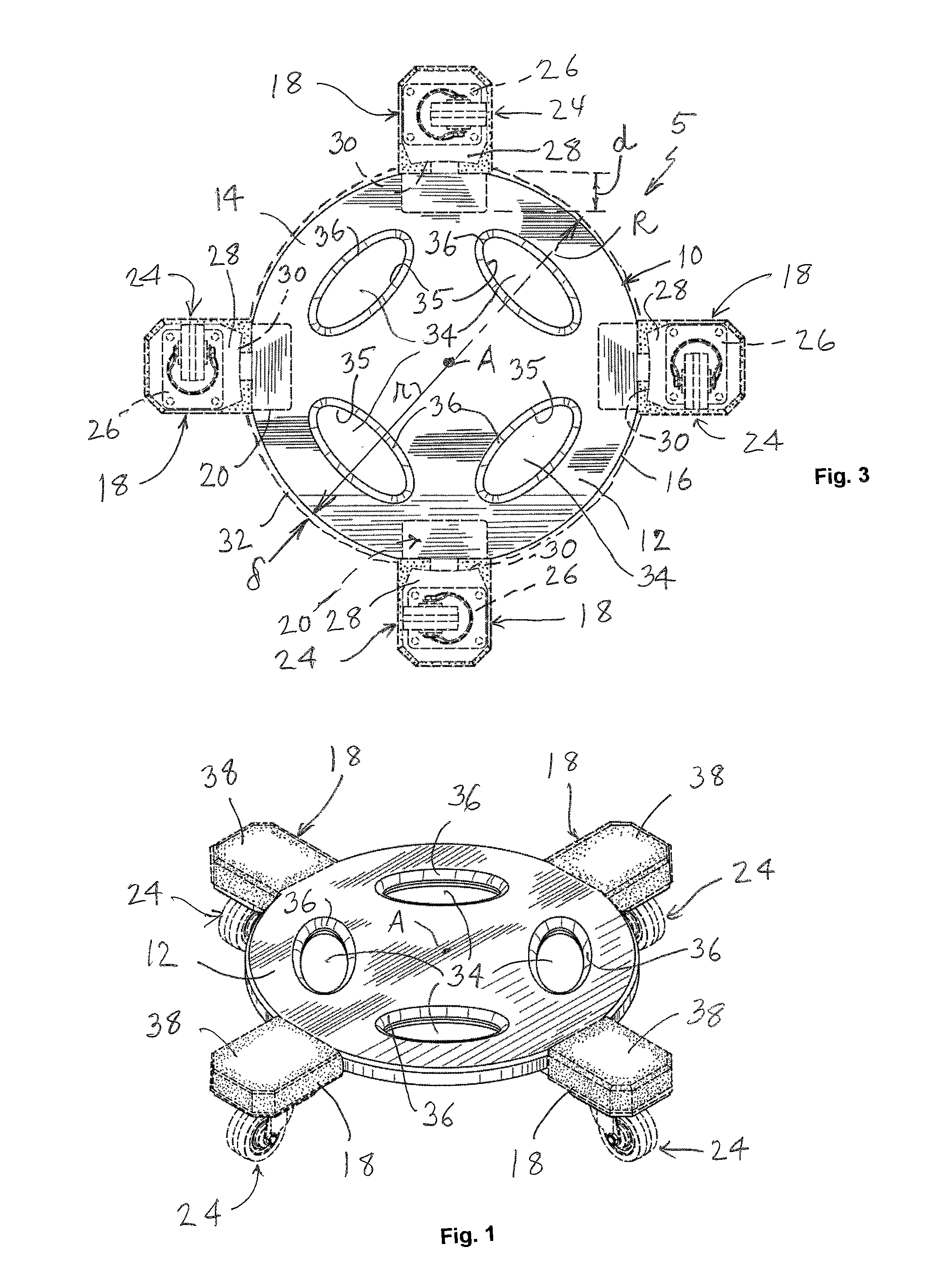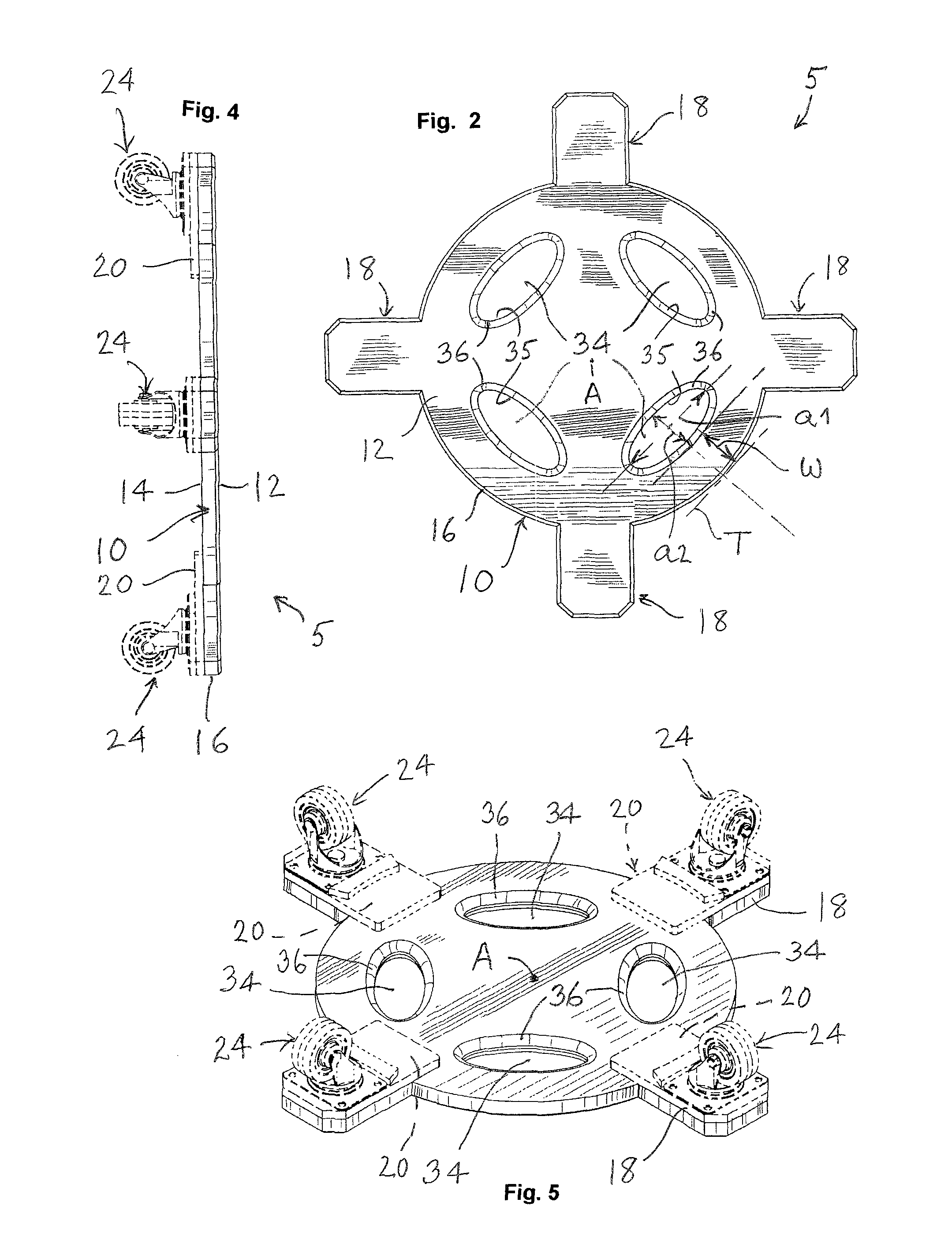Stackable dolly
a dolly and stacking technology, applied in the field of general purpose dollies, can solve the problems of inconvenient and inability to properly stack, and achieve the effects of reducing the extent, enhancing the load carrying ability of the dolly, and maintaining the vertical stability of the stack of dollies
- Summary
- Abstract
- Description
- Claims
- Application Information
AI Technical Summary
Benefits of technology
Problems solved by technology
Method used
Image
Examples
Embodiment Construction
[0025]Referring now specifically to the figures, in which similar or identical parts are designated by the same reference numerals throughout, and first referring to FIG. 1, a stackable dolly in accordance with the present invention is generally designated by the reference numeral 5.
[0026]The stackable dolly 5 includes a platform 10 which is shown to be circular. However, it will be evident that this is not a critical feature of the invention and other platform configurations such as a square or hexagon, for example, can also be used. The platform 10 may be made of any suitable material typically used to make dollies. For example, the platform 10 may be made of wood or plastic. Any material that has sufficient strength and is relatively light in weight can be used. The platform has a thickness “t” selected to give the dolly sufficient strength and rigidity to support relatively heavy objects that are typically moved by such dollies. In the illustrated embodiment, the circular dolly ...
PUM
 Login to View More
Login to View More Abstract
Description
Claims
Application Information
 Login to View More
Login to View More - R&D
- Intellectual Property
- Life Sciences
- Materials
- Tech Scout
- Unparalleled Data Quality
- Higher Quality Content
- 60% Fewer Hallucinations
Browse by: Latest US Patents, China's latest patents, Technical Efficacy Thesaurus, Application Domain, Technology Topic, Popular Technical Reports.
© 2025 PatSnap. All rights reserved.Legal|Privacy policy|Modern Slavery Act Transparency Statement|Sitemap|About US| Contact US: help@patsnap.com



